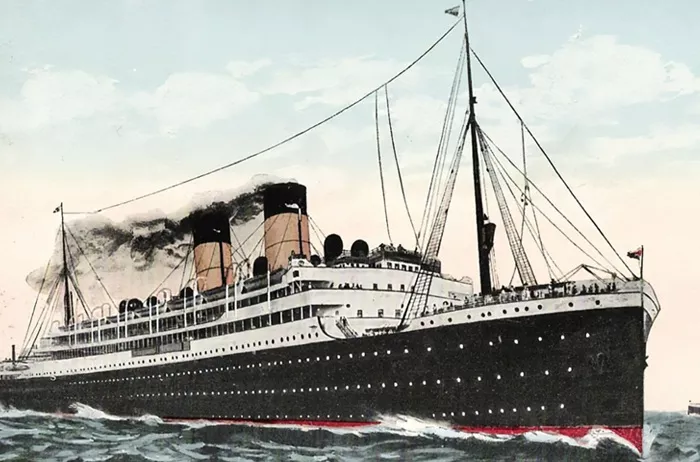A new book by North Vancouver author Eve Lazarus shines a light on one of Canada’s most significant yet underreported maritime tragedies: the sinking of the Empress of Ireland. In her latest work, Beneath Dark Waters: The Legacy of the Empress of Ireland Shipwreck, Lazarus uncovers the hidden history of the shipwreck that claimed the lives of over 1,000 people and remains the deadliest peacetime disaster in Canadian history.
The Empress of Ireland sank in May 1914 in the St. Lawrence River, just weeks before the outbreak of World War I. The disaster, which claimed 1,012 lives out of 1,477 passengers and crew, remains largely forgotten when compared to other high-profile maritime tragedies such as the Titanic and the Lusitania. Lazarus attributes the relative obscurity of the Empress of Ireland to several factors, including the overshadowing events of the assassination of Archduke Franz Ferdinand and the ship’s association with ordinary Canadians rather than the high-profile passengers of other shipwrecks.
“The Titanic was filled with big names from the New York social register, but the Empress of Ireland was a workhorse filled with ordinary Canadians,” Lazarus notes in the book. This story of ordinary lives lost at sea was, until now, largely forgotten.
The tragic sinking occurred when the Empress of Ireland was struck by the Norwegian coal ship Storstad in thick fog. The collision was devastating, and within just 14 minutes, the ship had sunk, leaving many passengers with little chance to escape. Only four of the ship’s 40 lifeboats were launched, resulting in a high death toll.
Lazarus first encountered the story of the Empress of Ireland while researching one of its survivors, Gordon Charles Davidson, a PhD candidate from Ontario. Davidson had been widely believed to have swum to shore after the sinking, a story that Lazarus later uncovered to be a myth. Her investigation into this myth sparked a deeper interest in the event and prompted her to explore the untold stories of the ship’s survivors and victims.
“It got me wondering how many other stories were wrong, and why they were wrong,” Lazarus explains. “I went down the rabbit hole to uncover more about the survivors and their stories.”
Her interest grew further after taking a boat tour over the site of the shipwreck five years ago. “It was quite a powerful experience,” Lazarus recalls. “Just knowing that you’re hovering over an underwater graveyard, with over 800 people still trapped inside, left a lasting impact on me.”
Lazarus’s research revealed an unexpected connection to British Columbia. While Toronto had the highest number of passengers on board, Vancouver was the second-largest source of passengers, with 39 people booked to travel on that fateful night. Tragically, only five of those passengers survived.
She highlights the historical significance of the Empress of Ireland as a symbol of Canada’s immigrant history. “The Empress brought 120,000 people to Canada, mostly immigrants, between 1906 and 1914,” Lazarus notes. “That’s roughly one in 40 Canadians today, which is staggering.”
Despite its significance, the Empress of Ireland has been overshadowed by other shipwrecks in the collective memory, particularly in the United States. Lazarus likens it to “Canada’s Mayflower,” acknowledging its importance in shaping the nation’s identity, yet noting that it remains largely unknown to many Canadians.
In Beneath Dark Waters, Lazarus masterfully brings new life to this forgotten tragedy. Through meticulous research and compelling storytelling, she highlights the lives of the ship’s survivors and those who perished, offering fresh insight into a pivotal moment in Canadian history.
“I think any 12-year-old kid can tell you about the Titanic, but ask them about the Empress of Ireland—such an incredible Canadian story—and no one knows about it,” Lazarus says. Her book aims to restore the Empress of Ireland to its rightful place in history, ensuring that the legacy of those lost is never forgotten.

